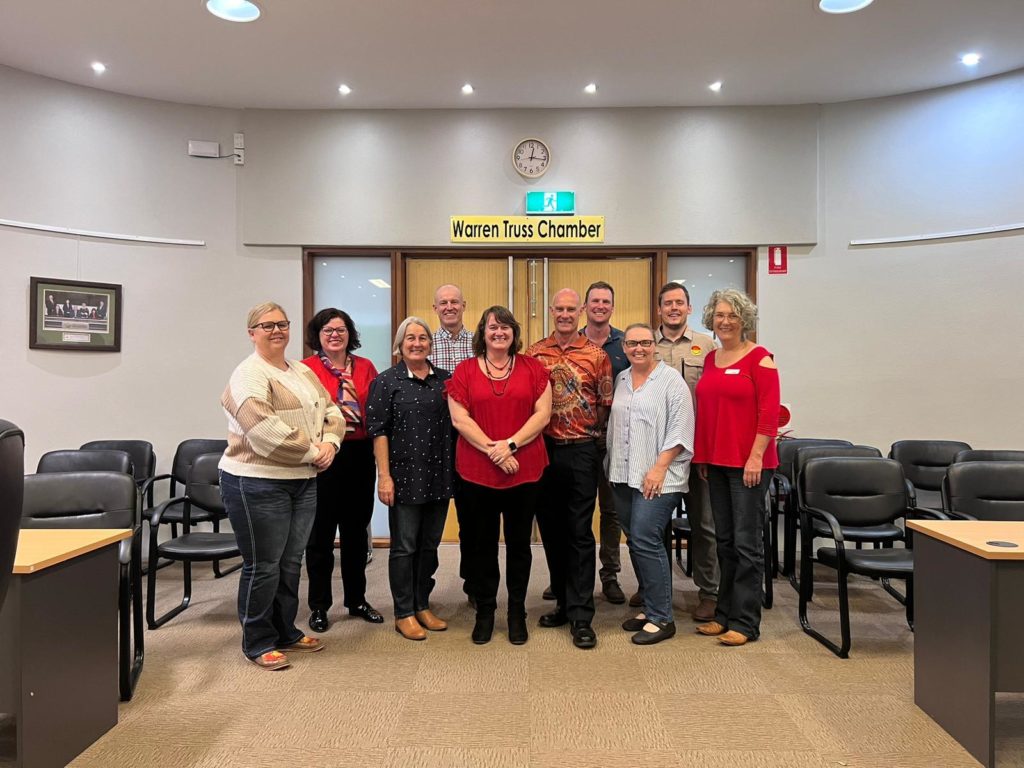Insights: 6 July 2023
By Caroline Larcher, Disaster Resilient: Future Ready Program Manager
I‘m now three months into the role of Disaster Resilient: Future Ready Program Manager with the Foundation for Rural & Regional Renewal – an organisation I’ve long admired. I’ve watched the work they’ve been doing to support recovery and resilience building over recent years. So, when the chance came to join them, I jumped at it.

Sadly, natural disasters are impacting rural, regional and remote communities more frequently, with significant consequences, including mental health and wellbeing issues, financial impacts and increased disadvantage.
Through our Disaster Resilient: Future Ready (DR:FR) program, FRRR and our partners have been working with communities to explore, learn and build on their existing strengths and capacities with a specific focus on increasing resilience to natural disasters.
Communities that are engaged, connected, empowered and have high social capital tend to respond and recover better from natural disasters than those with less capacity in these areas. They are also best placed to determine the most effective approaches to building their capacity and capabilities for their particular context.
Discussions at community and regional levels have highlighted that smaller, more isolated rural communities are often not specifically captured in formal emergency response management plans. These communities can be particularly vulnerable to disaster impacts, lacking local emergency services and waiting considerable time for response efforts, including periods of time when they may be physically cut off from outside support.
From early DR:FR projects, FRRR has developed a deeper understanding of effective ways to work with communities to build their capacity and help mitigate these issues. I’m delighted to be continuing this work in Victoria and in Queensland, working alongside local leaders to explore different ways for communities to get engaged and solve these issues.
One thing that’s increasingly apparent and comes up time and again in local conversations is the need for clarity in community-led disaster resilience work, especially around the role of community and where it intersects with the responsibilities of formal emergency response agencies. As the evaluation FRRR commissioned University of Sydney to do on the first DR:FR program showed, the time between disasters is an ideal opportunity for dialogue with communities about disaster information, communication and planning. This increases community ownership, engagement and action. And in the current communities, that’s exactly what we are doing.
Ideally, community-led approaches to resilience building should become more embedded in emergency planning, with communities recognised as equal collaborators in disaster resilience. This can require a change in thinking within the formal planning and response agencies, to adopt more agile and flexible approaches.
We know these things both from formal research but I’ve also seen it first-hand, supporting communities in their preparedness and recovery activities. Community-led disaster resilience thrives on local relationships. Supporting practical links between local community organisations and networks of people enables different stakeholders to mobilise and complement others.
FRRR’s latest DR:FR program is being delivered throughout the Burnett Inland in regional Queensland, in partnership with locally-based Red Earth Community Foundation, and with the support of the Australian Government and Minderoo Foundation. The aim is to build and retain capacity and knowledge in the region. This local focus is further embedded through the establishment of a regional program steering group, comprising local and state government, service providers, FRRR and Red Earth.
I had the opportunity to visit the community for the first time in April and meet DRFR Internal Advisory Group. It includes representation from North & South Burnett Regional Councils, Cherbourg Aboriginal Shire Council, Qld Department of Agriculture and Fisheries and local service agencies, bringing a rich variety of local perspectives to the program. This meeting opened up opportunities for further discussions with Council officers and business groups, as well as travel to different communities to get a first-hand view of their location and environment. It is expected that future trips will allow for other communities to be visited, to build a richer picture of the diversity of the region and the environmental challenges faced in different locations.
This kind of place-based, long-term work on the ground in communities is required for change and impact. This work is not without its challenges. The effort that communities invest into resilience and disaster preparedness takes time and this needs to be recognised and valued. Community capacity, exhaustion and volunteer fatigue will mean that additional resources working alongside and supporting communities will be important to initiate and maintain momentum.
Our hope is that through developing greater resilience and preparedness for emergencies, communities can help mitigate and alleviate the trauma that eventuates from a disaster. I look forward to walking alongside the Burnett and Victorian communities as they continue their work.

